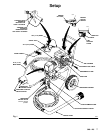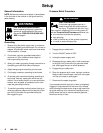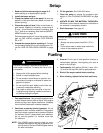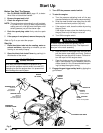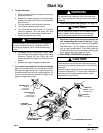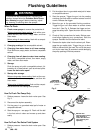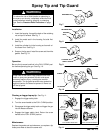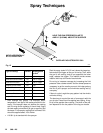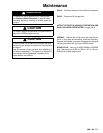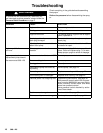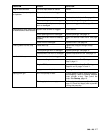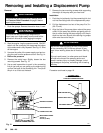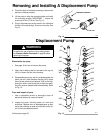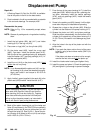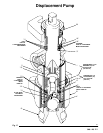
14 308-125
Spray
T
echniques
0551
OVERLAP
EACH STROKE BY 50%
HOLD THE GUN PERPENDICULAR T
O
AND 24” (610 MM) ABOVE THE SURF
ACE
MOVE HORIZONT
ALLY
A
T A STEADY RA
TE
Fig. 12
Type of Coating
1
Fibered? Recommended
Tip Size
2
Primers N/A
0.031 or larger
Aluminum Solvent–Base
No
0.041 or larger
Aluminum Emulsion
No
0.051 or larger
Asphalt Solvent–Base
No 0.051
Asphalt Emulsion
No 0.051
Aluminum Solvent–Base
Yes 0.061
Aluminum Emulsion
Yes 0.061
Asphalt Emulsion
Yes 0.061
1
Roof coatings vary greatly. The formulas, batch,
temperature,
and age of the coating all af
fect its vis
-
cosity. If the sprayer does not atomize the coating
well, thinning and/or agitating it should help. Apply
thinned
coating more heavily to get an equal dry film
thickness.
For example, coating that is thinned 10%
should
be applied about 10% thicker
.
2
A 0.061 tip is standard with the sprayer
.
Start
the spray stroke 24” (610
mm) above the target sur
-
face
and pull the trigger
as the
gun is moving.
Then, while
the gun is still moving, and as you approach the other
edge, release the trigger. This method avoids excess
material
build-up at the end of each stroke.
Do not try to increase coverage by increasing the fluid
pressure!
Use a slower
stroke. Use the lowest pressure
necessary
to get the results you want; this helps prolong
the life of your sprayer and minimizes coating lost by
overspray.
If
there
is a wind, angle the spray pattern into the wind to
minimize
drifting.
The best way to control the rate of coverage is with the
gun
tip size.
A small tip orifice applies less coating. A larg
-
er tip orifice applies more coating. The width of the pat-
tern
depends on the fan pattern of the tip you choose.




